With summer approaching and the fireworks festival already underway, the time is right for a visit to the Penghu islands. If you’re also looking for somewhere away from the crowds and a more natural landscape, consider a visit to Dongji Island (東吉嶼) in Penghu’s extreme southeast. Only accessible by scheduled boat service from Taiwan since 2016, the island is still mostly wild and undeveloped, and will likely remain that way, as it is part of Taiwan’s newest national park, the South Penghu Marine National Park, established in 2014.
Stepping off the boat, your attention will first be drawn to the temple in the middle of the village, set at the far end of a long plaza. On the right is the village’s only store, a cramped room that stocks little more than instant noodles and canned drinks. Beyond the plaza, the village quickly turns into a collection of buildings in various stages of ruin, punctuated by the occasional well-maintained home belonging to one of the island’s 300 remaining residents.
Buildings here were traditionally made of locally gathered coral rocks, which were stacked to make walls, and then covered in a layer of cement. Though coral is no longer allowed in modern construction, there are plenty of examples of this classic Penghu architecture still standing in Dongji. There are several so-called “Western-style” mansions here, evidence of the island’s more prosperous past.
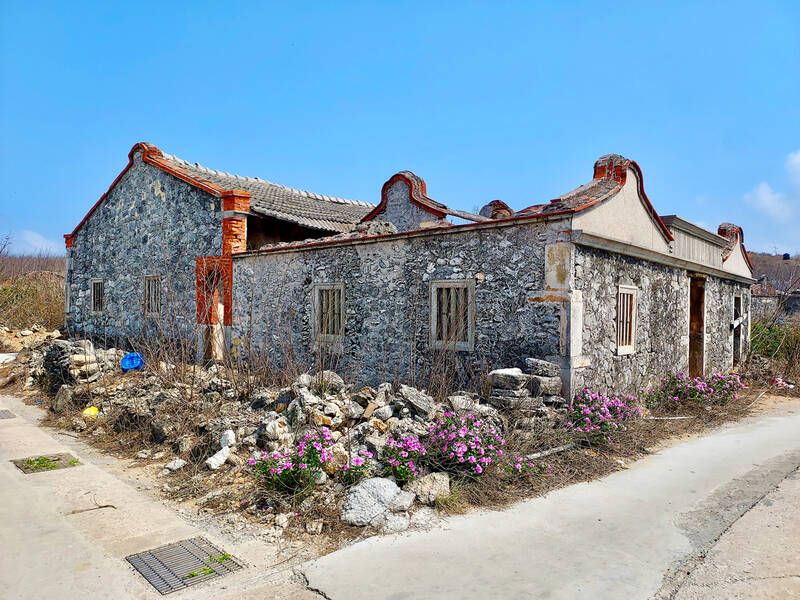
Photo: Tyler Cottenie
Going left from the central plaza will take you to the harbor, past the scooter rental shop, to a beautiful white-sand beach. Even though it’s technically in the harbor, the water is still clear and turquoise, and it’s a fun, safe spot for children to play. Nearby is an intertidal zone that can be explored on your own at low tide after registering at the national park visitor center right behind the beach.
Before leaving the village on the north side, you will pass by the old elementary school and the police station. The school was officially declared closed when the last remaining local child graduated in 1992. Goats now enter one of the classrooms at their leisure, leaving the floor strewn with their feces. As a further sign of how long the place has been abandoned, a portrait of late president Chiang Ching-kuo (蔣經國) still hangs on the far wall.
THE NORTH ROAD
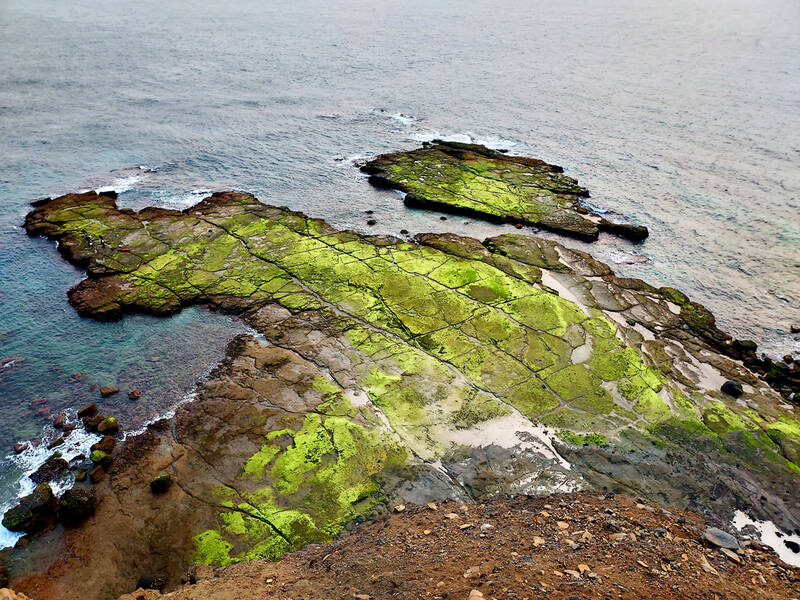
Photo: Tyler Cottenie
The road to the north of the village can be explored by scooter for those with a time limit, but it’s only 2 km long so can easily be explored on foot. The first site is the Central Weather Bureau’s weather station, which is manned year-round. Behind the station the land reaches a high point at Bagua Mountain and drops vertically to the ocean and village below. This is where you can come to get a bird’s-eye view of the entire village, and practically the entire island, which is dwarfed by the vast blue ocean extended nearly unbroken in every direction.
Further up the road is the Dongji Island Lighthouse. It is currently closed due to renovations, but normally the grounds are open to the public during the daytime. Perched on the edge of a cliff over the Taiwan Strait, this structure has been guiding nearby ships for 85 years. Come visit at night for a ghostly sight: as the revolving light beam passes above Dongji Island itself, it briefly illuminates the rolling grassland that makes up the highlands of the island.
The lighthouse is not the only thing up here permanently watching over the Taiwan Strait. As you continue down the road through the deserted countryside, you may come across the occasional oblong arrangement of stacked coral rocks. This is the final resting place for one of the village’s former residents, now forever facing the waters from which they earned their living. These untended and often unmarked graves in the middle of an abandoned field are a physical reminder of the ephemeral nature not only of human life but also of a way of life for an entire community. Where once there were gardens tended by residents of a flourishing community, now there is only grass, goats and the crumbling ruins of walls, graves and a military fort.
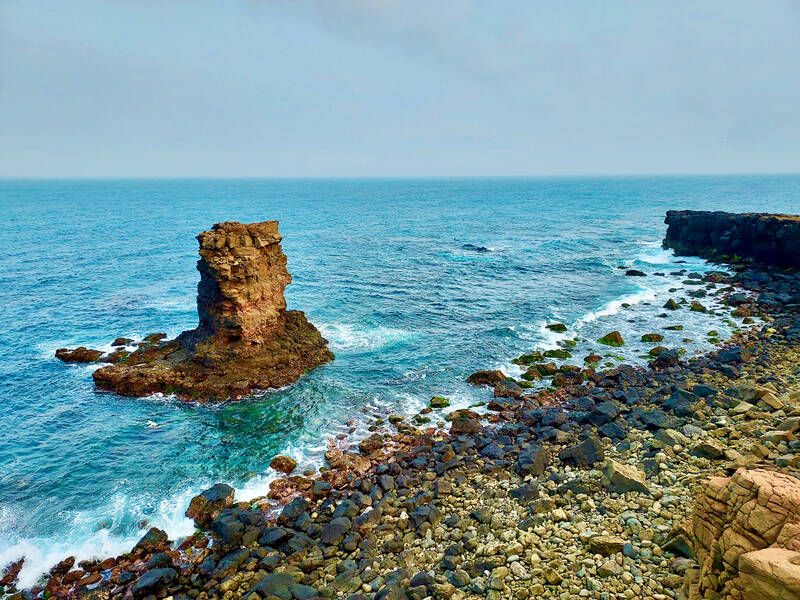
Photo: Tyler Cottenie
This fort lies at the end of the drivable road, on the east side of the island and was built during the Japanese era. The roofs are long gone, but the general layout of the camp is still obvious, including the air raid shelter. The shell of the observatory tower is still perfectly intact and the contrast of local black basalt and light-colored cement in its walls makes a visually attractive pattern.
OFF THE ROAD AND INTO THE WATER
The next stretch of coastline has no road at all, only a faint path worn into the grass by the local goat population, which far exceeds the human population. Along this shore, the volcanic origin of the Penghu islands is most apparent, as the vertical columns of basalt have eroded into seaside cliffs and unusual rock protrusions. This is the wildest part of the island, where you might not see another person anywhere, just grassy highlands, rocky shores and the expanse of the sea.
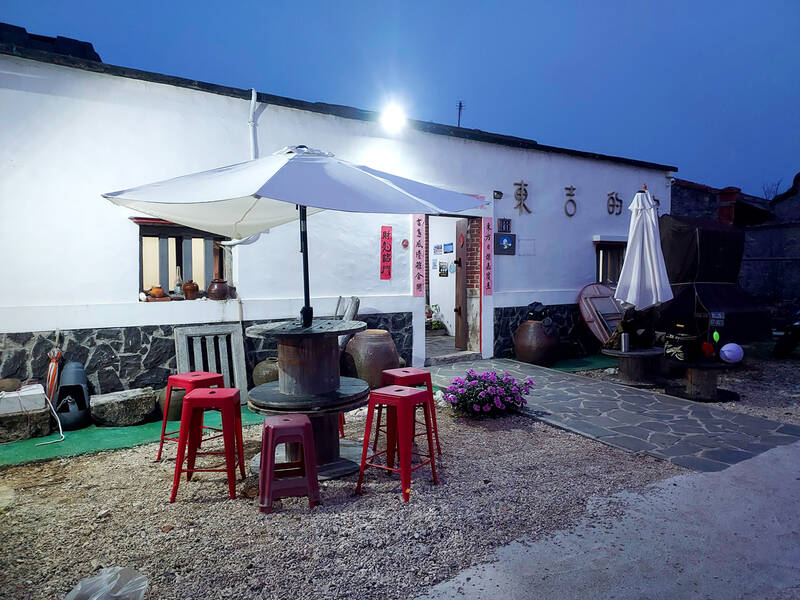
Photo: Tyler Cottenie
Decades ago, it would not have been so, however, as the highlands were covered in individual vegetable garden patches called caizai (菜宅, literally “vegetable residence”), a common feature throughout Penghu. Due to the fierce winter winds, vegetables wouldn’t grow well unless sheltered, so coral rock walls were erected to offer some protection. Outside the village, the remainder of the island is almost entirely covered by these irregular rectangular divisions of rocks, now slowly being reclaimed by nature.
Continuing south, a more obvious footpath picks up again near a sandy beach. Far offshore here lies a thriving coral reef, accessible from shore to experienced snorkelers at high tide only. The safest and most convenient way to access this area is through a day trip package from Magong with the Venus tour group, as their boat takes you directly to the best part of the reef and ties off to a buoy, giving you direct, easy access. The area is known in Chinese as the “lavender forest,” as there are wide swaths of beautiful purple coral here that are unlike anything you’ll see elsewhere in Taiwan.
From the beach, the footpath around the south of the island and back to the village is not only obvious, but actively maintained every year by national park staff and volunteers. If you only have time for one excursion out of the village, it should be on this southern path, as it perfectly captures the raw beauty of Dongji: basalt cliffs, wild goats, turquoise waters and crumbling ruins, with the occasional fisherman still to be seen on the shores below.
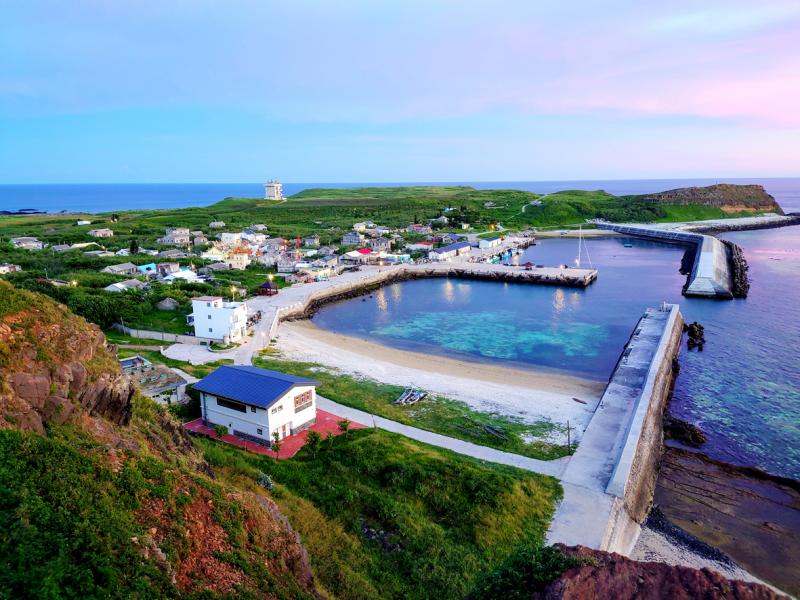
Photo courtesy of Hsiao Wei-che
LOGISTICS
Dongji can be accessed by daily boat from Magong at 9:20am (NT$400). Thursday to Monday the Pescadores Ferry leaves Chiayi’s Budai Harbor at 8:20am for Magong, making a stop at Dongji (NT$1,020). Friday to Sunday and most Mondays and Wednesdays, there is also a ferry to and from Tainan’s Jiangjun Harbor. It leaves at 7:30am for Dongji (NT$1,500), and leaves Dongji around 4pm for the return trip. On some days, this boat also visits other islands in southern Penghu during the day.
For those looking to do water activities, a better alternative is to book through an operator like Venus (薇納斯海上娛樂), English available, LINE contact @697epglf, tel: (09) 8807-5092. Their package includes not only the transportation to and from Magong, but also the equipment, guide and boat service to the lavender forest snorkeling site, as well as stand-up paddleboard and see-through kayak use at the Dongji harbor beach. Lunch and scooter rental are also included.
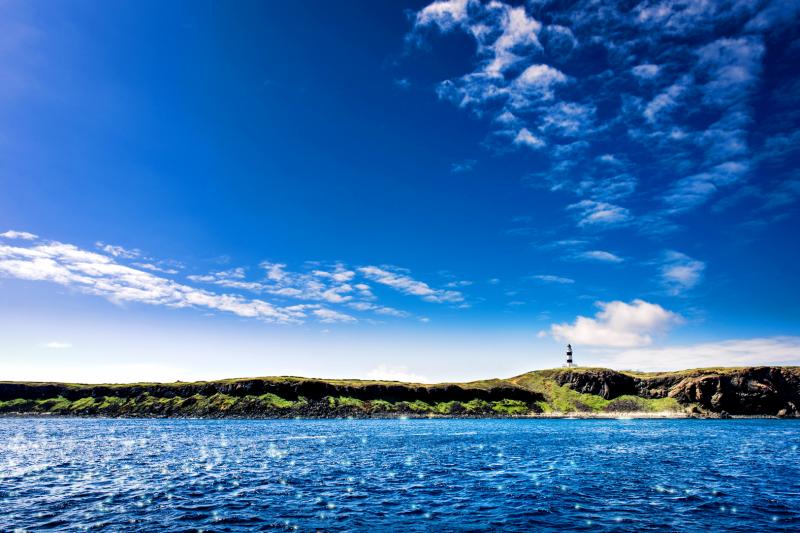
Photo courtesy of Wikimedia Commons
There are now several homes offering accommodations on the island. Dongji Homestay (東吉的家) is a good option as they can also provide meal service (breakfast, lunch and/or dinner) as requested (there are no restaurants on Dongji). The host is very hospitable, and can arrange snorkeling excursions either on Venus’s boat or from shore with a guide.

On April 26, The Lancet published a letter from two doctors at Taichung-based China Medical University Hospital (CMUH) warning that “Taiwan’s Health Care System is on the Brink of Collapse.” The authors said that “Years of policy inaction and mismanagement of resources have led to the National Health Insurance system operating under unsustainable conditions.” The pushback was immediate. Errors in the paper were quickly identified and publicized, to discredit the authors (the hospital apologized). CNA reported that CMUH said the letter described Taiwan in 2021 as having 62 nurses per 10,000 people, when the correct number was 78 nurses per 10,000

As we live longer, our risk of cognitive impairment is increasing. How can we delay the onset of symptoms? Do we have to give up every indulgence or can small changes make a difference? We asked neurologists for tips on how to keep our brains healthy for life. TAKE CARE OF YOUR HEALTH “All of the sensible things that apply to bodily health apply to brain health,” says Suzanne O’Sullivan, a consultant in neurology at the National Hospital for Neurology and Neurosurgery in London, and the author of The Age of Diagnosis. “When you’re 20, you can get away with absolute

May 5 to May 11 What started out as friction between Taiwanese students at Taichung First High School and a Japanese head cook escalated dramatically over the first two weeks of May 1927. It began on April 30 when the cook’s wife knew that lotus starch used in that night’s dinner had rat feces in it, but failed to inform staff until the meal was already prepared. The students believed that her silence was intentional, and filed a complaint. The school’s Japanese administrators sided with the cook’s family, dismissing the students as troublemakers and clamping down on their freedoms — with

As Donald Trump’s executive order in March led to the shuttering of Voice of America (VOA) — the global broadcaster whose roots date back to the fight against Nazi propaganda — he quickly attracted support from figures not used to aligning themselves with any US administration. Trump had ordered the US Agency for Global Media, the federal agency that funds VOA and other groups promoting independent journalism overseas, to be “eliminated to the maximum extent consistent with applicable law.” The decision suddenly halted programming in 49 languages to more than 425 million people. In Moscow, Margarita Simonyan, the hardline editor-in-chief of the